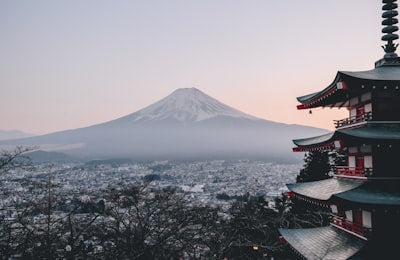1. From Prehistoric Times to Ancient Japan
The Jomon and Yayoi Periods
During Japan’s Jomon period (14,000 BCE – 300 BCE), the people lived by hunting and gathering, using tools made from stone, bone, and wood. They also created unique pottery, such as flame-patterned Jomon ware. Around the 2nd century BCE, rice cultivation, bronze, and iron tools were introduced from the mainland, spreading from Kyushu throughout Japan. This marked the beginning of more complex woodworking and textile production, with the advent of tools like agricultural implements and looms.
The Kofun and Asuka Periods
As agriculture progressed, small farming villages merged into larger communities, leading to the emergence of powerful rulers and the construction of large burial mounds (kofun). During the Asuka period (538–710 CE), craftsmen from China and Korea brought advanced skills in metalwork and carpentry. These developments led to the creation of temples and Buddha statues, marking the beginning of Japan's Buddhist influence on crafts.
2. The Nara Period: A Golden Age for Crafts

International Influences on Design
The 8th century saw the establishment of the capital in Nara, where Buddhism flourished under state protection. With the arrival of crafts and techniques from the Silk Road, Japanese artisans began incorporating international motifs like phoenixes, lions, and lotus flowers into their work. Items stored in the Shosoin Treasure House in Nara offer a glimpse into the cultural fusion of the time, with pieces originating from China, Persia, and beyond.
3. Medieval Japan and the Rise of Specialized Crafts

Kamakura and Muromachi Periods
During the Kamakura period (1185–1333 CE), the rise of the samurai class brought about a new aesthetic: simplicity and strength. Handicrafts such as metalwork and pottery developed into specialized trades, reflecting the practicality favored by the military elite. The subsequent Muromachi period (1336–1573 CE) saw further refinement of these crafts, with influences from Zen Buddhism and Chinese tea culture, both of which emphasized subtle beauty.
4. Edo Period: Craftsmanship Reaches the Masses
Expansion of Local Industries
During the Edo period (1603–1868 CE), regional industries flourished as each province specialized in local crafts. Artisans began to adapt their work to the tastes of merchants and townspeople, creating practical yet decorative goods. Production techniques improved, leading to efficient division of labor in workshops, and industries such as textiles, lacquerware, and ceramics spread across the country.
5. The Meiji Era and the Modernization of Crafts
Embracing Industrialization
The Meiji Restoration (1868) ushered in rapid modernization as Japan adopted Western technologies. However, traditional crafts retained their importance, especially for export. At international exhibitions like the Vienna World’s Fair, Japanese lacquerware and porcelain gained global acclaim. Government initiatives further promoted craft education, establishing institutions like the Tokyo School of Art to preserve and modernize traditional techniques.
Bridging the Past and Present: Japanese Crafts in Modern Interiors

Our company, Kimono Art Interior, draws inspiration from Japan’s rich history of craftsmanship by using Nishijin-ori kimono fabric in contemporary interior designs. These fabric boards offer a unique way to connect with Japan’s cultural heritage while enhancing modern living spaces. Whether you're interested in ancient woodworking techniques or traditional textiles, explore how these elements can transform your home by visiting our collection at Kimono Art Interior.
6. Conclusion: A Legacy of Beauty and Craftsmanship
Japanese crafts reflect centuries of skill, innovation, and cultural exchange. From prehistoric pottery to modern lacquerware, each era contributed to a vibrant tradition of artistry that continues to inspire today. Whether you appreciate the simplicity of Zen aesthetics or the intricate beauty of Nishijin fabrics, these crafts offer a tangible connection to Japan’s cultural heritage.
We invite you to explore our collection at Kimono Art Interior to experience the elegance of Japanese craftsmanship in your own home. Visit us today to discover how centuries-old traditions can bring timeless beauty to modern interiors.

